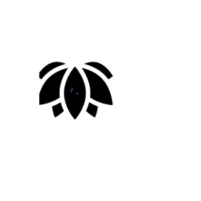
Imagine this: You’ve just started using retinol, the skincare ingredient hailed as a miracle worker for acne, wrinkles, and dullness. You’re excited, ready to unveil glowing, youthful skin. But instead, your face breaks out in red, flaky patches, and your complexion looks worse than ever. What’s going on? Welcome to the retinol purge—a frustrating but entirely normal phase of your skincare journey. Don’t panic! This guide will walk you through everything you need to know about retinol purging, how to manage it, and how to emerge with the radiant skin you’ve always dreamed of.
What Is the Retinol Purge, and Why Does It Happen?
The Science Behind the Purge
Retinol, a derivative of vitamin A, is a powerhouse ingredient that accelerates skin-cell turnover. This process brings underlying impurities—like clogged pores and microcomedones (tiny acne precursors)—to the surface faster than your skin would naturally. While this sounds like a good thing (and it is, in the long run), it can initially cause breakouts, redness, and peeling. Think of it as your skin hitting the fast-forward button on its natural detox process.
Why Does It Feel Like a Setback?
The purge can feel like a betrayal, especially if you started retinol to clear your skin. But here’s the truth: retinol isn’t causing new acne. It’s simply revealing what’s already lurking beneath the surface. As dermatologist Dr. Anjali Mahto explains, “The retinoid is speeding up a process that would have naturally occurred over a longer period, condensing several weeks or months of skin activity into a shorter timeframe.”
How Long Does the Retinol Purge Last? (And Will It Come Back?)
The Timeline: Patience Is Key
The retinol purge typically lasts between four to six weeks, though this can vary depending on your skin type and the strength of the retinol you’re using. During this time, your skin is essentially recalibrating itself. Consistency is crucial—stick with it, and you’ll likely see clearer, smoother skin on the other side.
Will It Happen Again?
Once your skin adjusts, the purge shouldn’t recur unless you significantly increase the strength of your retinol or restart it after a long break. If irritation persists beyond eight weeks, it might be a sign that the formulation isn’t right for your skin, and it’s time to consult a dermatologist.
How to Tell If It’s a Purge or a Bad Reaction
Purging vs. Irritation: Know the Difference
Purging typically occurs in areas where you already experience breakouts and manifests as small whiteheads or pustules that resolve relatively quickly. On the other hand, irritation from retinol can cause widespread redness, peeling, burning, or excessive dryness, often in areas where you don’t normally break out. An allergic reaction may involve swelling or intense itching.
When to Seek Help
If symptoms like persistent redness, severe inflammation, or discomfort last more than a few weeks, it’s time to pause use and consult a professional. Reducing frequency, switching to a lower concentration, or opting for a gentler retinol alternative may be necessary.
How to Minimize the Retinol Purge: Tips and Tricks
Start Low and Slow
The key to minimizing purging is to introduce retinol gradually. Begin with a low concentration (around 0.2% to 0.3%) and apply it every other night for the first few weeks. This allows your skin to build tolerance without overwhelming it.
Hydration Is Your Best Friend
Retinol can be drying, so counterbalance its effects with hydrating products. Look for serums and moisturizers containing hyaluronic acid, ceramides, or glycerin to keep your skin barrier intact and comfortable.
Don’t Skip Sunscreen
Retinol makes your skin more sensitive to sunlight, so daily SPF is non-negotiable. Opt for a broad-spectrum sunscreen with at least SPF 30 to protect your skin and prevent further irritation.
The Best Skincare Products to Combat Retinol Purging
1. The Ordinary Retinol 0.2% in Squalane
A gentle, beginner-friendly option that combines retinol with squalane for added hydration. Perfect for easing into retinol use without overwhelming your skin.
2. Naturium Retinaldehyde Cream Serum
This slow-release retinaldehyde formula minimizes irritation while delivering powerful results. Ideal for those looking to reduce the likelihood of purging.
3. La Roche-Posay Cicaplast Baume B5
A soothing balm that calms irritation and supports skin repair. Great for applying after retinol to reduce redness and peeling.
4. CeraVe Hydrating Cleanser
A gentle, non-stripping cleanser that helps maintain your skin’s moisture barrier while soothing irritation.
5. EltaMD UV Clear Broad-Spectrum SPF 46
A lightweight, non-comedogenic sunscreen designed for sensitive skin. Provides essential sun protection without clogging pores.
The Light at the End of the Tunnel
The retinol purge may feel like a setback, but it’s a temporary phase on the path to healthier, more radiant skin. With patience, the right products, and a consistent routine, you’ll soon see the transformative benefits of retinol. Remember, every breakout is a step closer to the glowing complexion you’ve always wanted. Stick with it—your future self will thank you.
So, are you ready to embrace the journey? Your radiant skin awaits.
